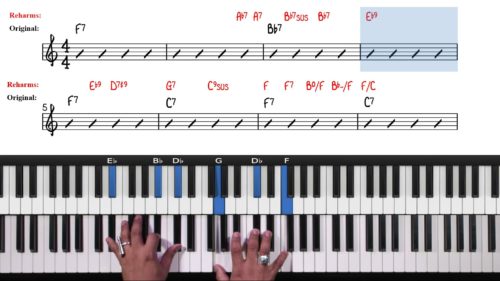12 Bar Blues Passing Chords
In this lesson Jon shows us some passing chords and chord substitutions, outlining ways to add some elements of surprise into the 12 bar blues.
In the lessons up to this point we have been using the simplest form of the 12 bar blues. In this form there are three essential chords – the 1, 4 and 5 – but as we turn up the level of sophistication we can start adding more chords to this basic frame. As we do this we get closer to a New Orleans-style blues.
Re-harmonising the Last 4 Bars
The first change we can make comes in the last 4 bars of the blues form. Instead of playing G7 – F7 – C7 like we have so far, we can change this to D7 – G7 – C7 to make it more like a jazz blues progression. Then, to lead in to this progression we can add an A7 in bar 7 to make the progression A7 – D7 – G7 – C7.
Chromatic Passing Chords
To add even more movement to this progression we can add some more chromatic passing chords that walk down to the A7. In simple terms these chords are C7 – B7 – Bb7 – A7 but it’s much more interesting if we add some flavour to each of these chords.

One way to do this is to play the note G on the top of each chord as we move through them. This adds a lot of interest to each chord and helps to make for a smooth progression. With this added note our chords become C7 – B+7 – Bb13 – A7.
Lesson Downloads
-
Walking Bass Line For Passing Chords File Type: pdf
-
Chromatic Passing Chords File Type: pdf
-
Blues Passing Chords File Type: mp3
-
Blues Passing Chords File Type: midi
Practice Tips
-
This lesson focusses on playing in the key of C but it's also great to practice this progression in other keys. F, Bb and G are commonly used keys or you can practice in all 12 if you have time.
-
The progression Jon talks about in this lesson is also applicable to the jazz blues chord progression. You could use the same progression as a subtle re-harmonisation in almost any jazz blues you like.
-
Also note that the progression presented here is a great example of voice leading: the note G is held over the four descending chords and then it moves to F# on the D7 chord, F on the G7 chord and finally E on the C7 chord.









